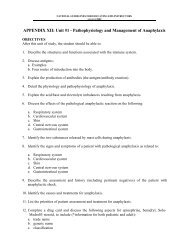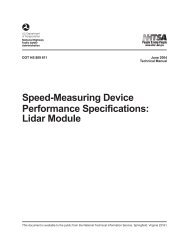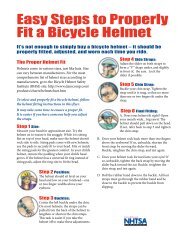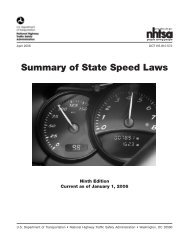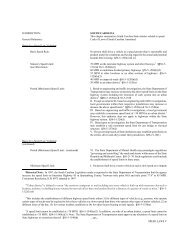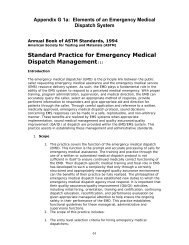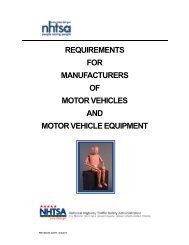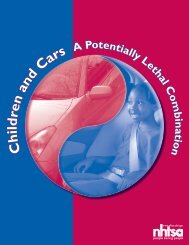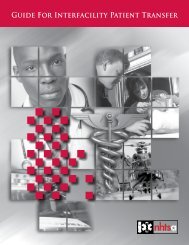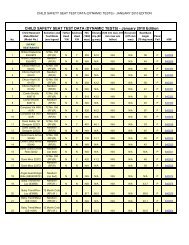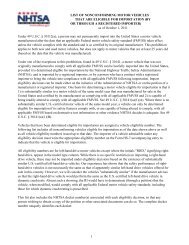Memorandum - NHTSA
Memorandum - NHTSA
Memorandum - NHTSA
Create successful ePaper yourself
Turn your PDF publications into a flip-book with our unique Google optimized e-Paper software.
V-29<br />
Platform Free-Fall Velocity Limits (S6.6) - During the operation of the lift, a loss of hydraulic<br />
pressure/electrical power or a mechanical failure could occur, with the lift at the bus floor level<br />
[1,013 - 1,267 mm (40-50 in.) off the ground], in which case the person on the lift may be subjcct<br />
to a free-fall condition. A free-fall from 1,267 mm (50 in.) results in an impact velocity of 5 m,’s<br />
(1 1 mph). The Final Rule requires a maximum free-fall velocity or terminal velocity of 305<br />
“/s (12 inhec.). Compliance with this requirement is made through engineering analysis<br />
assuming a 272 kg mass (600 lbs.) load. In case of a single point failure, the lift platform cannc )t<br />
change angular orientation more than 2 degrees in any direction. This test applies to both<br />
primary power source and manual backup operating modes. The free-fall speed is about twice<br />
the normal lift operating velocity of 152 m ds (6 in./sec.). In the event of a power or mechankal<br />
failure this speed is safe enough to ensure that impact injuries do not occur. The free-fall<br />
velocity limit and no excessive change in platform angle are consistent with the Access Board<br />
that prohibits the platform from accelerating to the ground, with a user on-board, due to a sing1e<br />
point failure. It is believed that all lift equipment currently on the market will comply. There<br />
will be no incremental cost impact.<br />
Control Systems (S6.7) - The FTA-sponsored guidelines indicate that lift operator error<br />
contributes to a significant proportion of lift accidents and can also cause maintenance and<br />
reliability problems. The requirements for control sequences and standardization is designed 10<br />
reduce the potential for human error. Several factors have been identified which contribute to<br />
operator error: (1) the lack of familiarity with the lift controls, (2) the lack of standardization i 11<br />
the control sequence and types of controls (e.g., different controls for different lifts); and (3) the



